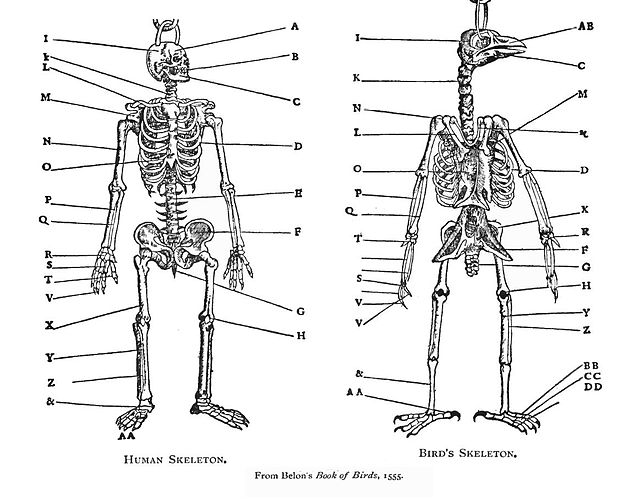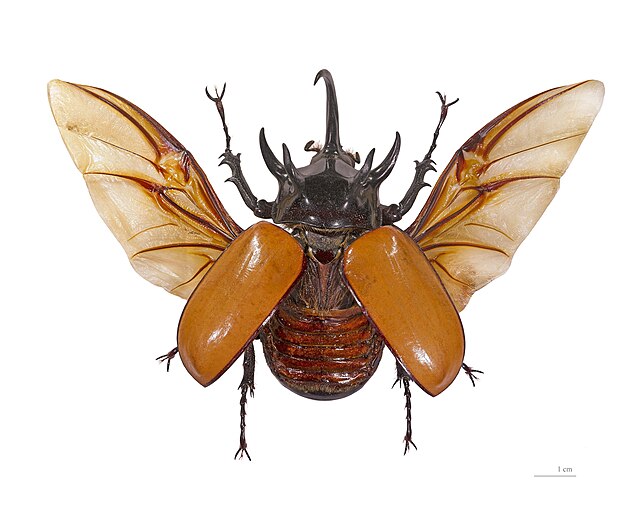In biology, homology is similarity due to shared ancestry between a pair of structures or genes in different taxa. A common example of homologous structures is the forelimbs of vertebrates, where the wings of bats and birds, the arms of primates, the front flippers of whales, and the forelegs of four-legged vertebrates like dogs and crocodiles are all derived from the same ancestral tetrapod structure. Evolutionary biology explains homologous structures adapted to different purposes as the result of descent with modification from a common ancestor. The term was first applied to biology in a non-evolutionary context by the anatomist Richard Owen in 1843. Homology was later explained by Charles Darwin's theory of evolution in 1859, but had been observed before this, from Aristotle onwards, and it was explicitly analysed by Pierre Belon in 1555.
Pierre Belon systematically compared the skeletons of birds and humans in his Book of Birds (1555)
The front wings of beetles have evolved into elytra, hard wing-cases.
Dragonflies have the ancient insect body plan with two pairs of wings.
The hind wings of Dipteran flies such as this cranefly have evolved divergently to form small club-like halteres.
A tetrapod is any four-limbed vertebrate animal of the superclass Tetrapoda. Tetrapods include all extant and extinct amphibians and amniotes, with the latter in turn evolving into two major clades, the sauropsids and synapsids. Some tetrapods such as snakes, legless lizards, and caecilians have evolved to become limbless via mutations of the Hox gene, although some do still have a pair of vestigial spurs that are remnants of the hindlimbs.
Tetrapod
Eusthenopteron, ≈385 Ma
Tiktaalik, ≈375 Ma
Acanthostega, ≈365 Ma








